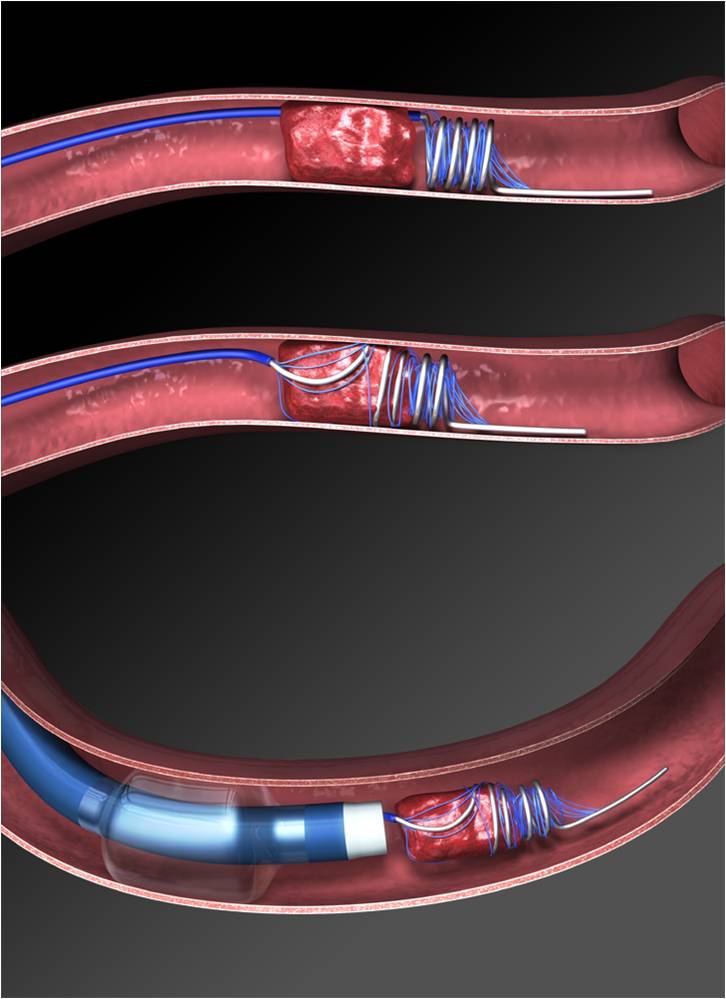MERCI Retriever on:
[Wikipedia]
[Google]
[Amazon]
 The MERCI Retriever is a medical device designed to treat Ischemic Strokes. The name is an
The MERCI Retriever is a medical device designed to treat Ischemic Strokes. The name is an
 The MERCI Retriever is a medical device designed to treat Ischemic Strokes. The name is an
The MERCI Retriever is a medical device designed to treat Ischemic Strokes. The name is an acronym
An acronym is a word or name formed from the initial components of a longer name or phrase. Acronyms are usually formed from the initial letters of words, as in ''NATO'' (''North Atlantic Treaty Organization''), but sometimes use syllables, as ...
for Mechanical Embolus Removal in Cerebral Ischemia. Designed by University of California, Los Angeles
The University of California, Los Angeles (UCLA) is a public land-grant research university in Los Angeles, California. UCLA's academic roots were established in 1881 as a teachers college then known as the southern branch of the California St ...
in 2001, MERCI was the first device approved in the U.S. to remove blood clots in patients who had acute brain ischemia
Brain ischemia is a condition in which there is insufficient bloodflow to the brain to meet metabolic demand. This leads to poor oxygen supply or cerebral hypoxia and thus leads to the death of brain tissue or cerebral infarction/ischemic stroke. ...
.
Medical uses
It may result in benefit in certain people as long as 8 hours after the ischemic event. In this carefully selected group it achieved 48% vessel re-canalization and lower mortality rates than the use of r-tPA in revascularized patients.Mechanism
In an ischemic stroke, there is an obstruction within blood vessels that supply blood to the brain. The goal in treatment of such a stroke is to restore blood flow through these blood vessels. The MERCI retriever does so by allowing the removal of the blood clots causing the obstruction. The retriever consists of a long thin wire with a helical coil formed at the distal end. Aballoon catheter
A balloon catheter is a type of "soft" catheter with an inflatable "balloon" at its tip which is used during a catheterization procedure to enlarge a narrow opening or passage within the Human body, body. The deflated balloon catheter is positione ...
is snaked into the affected vessel from the femoral artery
The femoral artery is a large artery in the thigh and the main arterial supply to the thigh and leg. The femoral artery gives off the deep femoral artery or profunda femoris artery and descends along the anteromedial part of the thigh in the fem ...
, and the balloon is inflated to prevent blood flow that could hinder the retrieval process. The retriever is then fed through the catheter, during which the distal coil is straightened to fit through the catheter tube. When the retriever emerges at the clot site, the coil reforms, wrapping around the clot and allowing the clot to be removed with the catheter.
History
The MERCI Retriever obtained U.S.FDA
The United States Food and Drug Administration (FDA or US FDA) is a federal agency of the Department of Health and Human Services. The FDA is responsible for protecting and promoting public health through the control and supervision of food ...
clearance in August 2004 for re-canalization of cerebral arteries in acute stroke.
FDA Process
Concentric Medical undertook a preliminary study of the MERCI retriever to assess its effectiveness. The manufacturers of the MERCI device filed a 510(k) premarket notification, and received an FDApremarket approval
The United States Federal Food, Drug, and Cosmetic Act (abbreviated as FFDCA, FDCA, or FD&C) is a set of laws passed by the United States Congress in 1938 giving authority to the U.S. Food and Drug Administration (FDA) to oversee the safety of f ...
in 2004.
References
{{reflist Medical devices Stroke